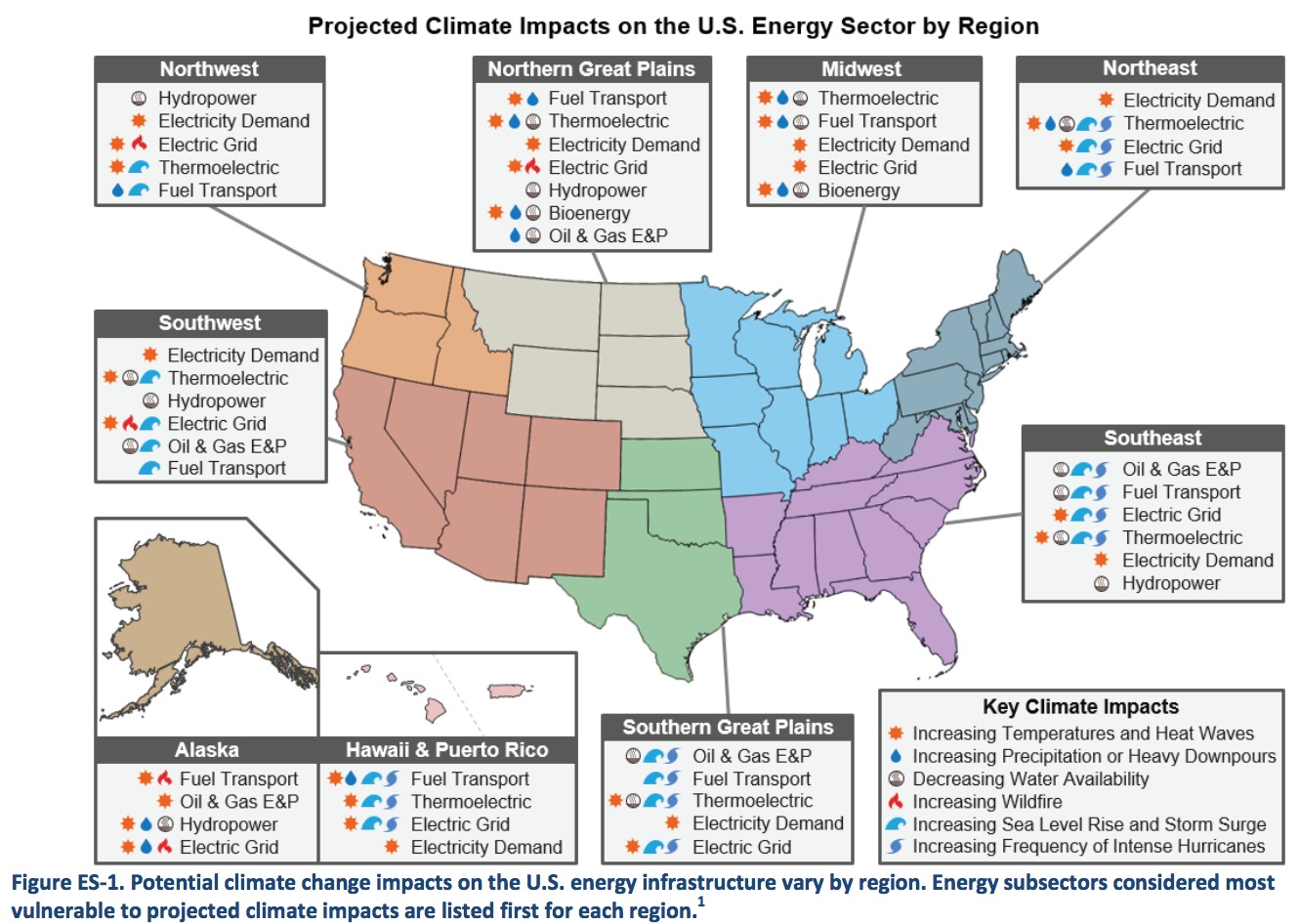UNITED STATES DEPARTMENT OF ENERGY
Executive Summary
Changes in climate create diverse challenges across the U.S. energy system. Some energy infrastructure assets have already suffered damage or disruption in services from a variety of climate-related impacts, such as higher temperatures, rising sea levels, and more severe weather events. In the absence of concerted action to improve resilience, energy system vulnerabilities pose a threat to America’s national security, energy security, economic wellbeing, and quality of life.
Building climate change resilience into our energy infrastructure planning is a challenging and complex undertaking. Planning horizons can span several decades (the typical service life of most energy assets), associated investments can extend into the billions of dollars, and relevant technologies can change rapidly. Some climate change impacts may trigger cascading effects on natural resources, energy demand, and supply chains. Challenges are compounded when addressing climate risks at the regional or local level, where climate change projections are subject to less certainty than at the national scale.
The U.S. Department of Energy (DOE) has proactively launched numerous initiatives to support and facilitate energy sector climate preparedness and resilience at national, regional, and local levels. In addition to enhancing resilience to climate change, these actions may also have co-benefits that accommodate non-climate resilience needs (e.g., aging infrastructure, cyber security, physical attacks, geomagnetic storms). To assist infrastructure owners and utility planners, DOE has compiled this report on region-specific energy vulnerabilities to climate change (see Figure ES-1) and current resilience solutions.
Key Climate Impacts and Regional Vulnerabilities
Vulnerabilities to climate change vary across regions depending upon the nature of the climate impacts (see text box), the types and age of energy systems present, and the projected combined impacts on operations, energy demand, and energy supply chains. Major energy systems affected by regional climate impacts include the following:
- Oil and gas upstream operations are most vulnerable in the Southeast, Southern Great Plains, and Alaska.
- Fuel transport in every region is vulnerable to a variety of climate impacts, including increasing heavy precipitation, heat waves, drought, hurricanes, and sea level rise-enhanced storm surge.
- Thermoelectric power generation is vulnerable to increasing temperatures and reduced water availability in most regions, particularly in the Midwest, Great Plains, and southern regions.
- Hydropower is vulnerable to reduced snowpack, earlier melting, and changes to precipitation patterns, mainly in western regions.
- Bioenergy crops in the Midwest and Northern Great Plains may be harmed by higher temperatures and more frequent droughts and floods.
- Electric grid operations and infrastructure in every region is vulnerable to a variety of climate impacts, including increasing temperatures, heavy rainfall events, wildfire, hurricanes, and storm surge.
- Electricity demand is affected by increasing temperatures and is a key vulnerability in nearly every region.
Download full version (PDF): Climate Change and the U.S. Energy Sector
About the United States Department of Energy
Energy.gov
The mission of the Energy Department is to ensure America’s security and prosperity by addressing its energy, environmental and nuclear challenges through transformative science and technology solutions.
Tags: Resilience, U.S. DOE, United States Department of Energy







 RSS Feed
RSS Feed